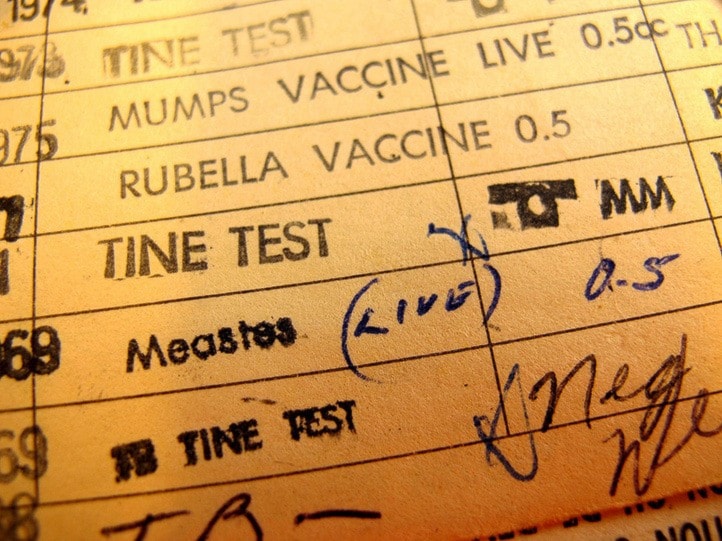The Vancouver Canucks recently made national headlines: not for what they are (or are not) doing on the ice, but because several members of the team missed games because they contracted the mumps.
It would be easy to blame the anti-vaccination movement for the outbreak which affected the Canucks, as well as bar patrons in Toronto and people at several U.S. college campuses in recent weeks. However, that is only part of the problem, says Dr. Todd Hatchette, a researcher with the Canadian Institutes of Health Research.
“It’s a combination of factors,” he says, noting that mumps and the NHL were also in the spotlight in 2014, when Pittsburgh Penguins superstar Sidney Crosby came down with the disease. Hatchette explains that those born before the mumps vaccine was introduced in Canada in 1970 are assumed to have been exposed to the virus and developed immunity; but it was not until 1996 that it was realized that a single mumps vaccination was often not enough and a second, booster, mumps vaccine was introduced in a combined measles/mumps/rubella (MMR) vaccine.
It means that anyone born between 1970 and 1996 has a lack of natural exposure to the mumps virus, and also did not receive the booster, putting them at increased risk of developing the disease later in life. In the Interior Health region, children receive the MMR vaccine at 12 months, and a booster at age four.
“It’s why we’re seeing [outbreaks of mumps] in hockey players and university students,” explains Hatchette, noting that many people in this age group were born before 1996. He adds that the mumps virus spreads rapidly among groups of people—such as hockey players and students—who are in close quarters with each other and sharing drinks and water bottles.
“The classic features of the mumps are fever, aches and pains, and a swelling of the parotid [salivary] glands, which is what gives you that chipmunk look,” he says. “But it can go beyond this to meningitis, and it can cause hearing loss in children, as well as swelling of the ovaries in women, and swelling of the testicles in men [orchitis], which can lead to sterility.
“Most of the people who are being infected now only had one dose of the vaccine,” continues Hatchette. “But there are pockets of people across the country who don’t believe in vaccination, and they’re at even greater risk.”
He notes that when significant numbers of people refuse to vaccinate, they put others at risk as well. “You lose ‘herd immunity’, which helps individuals who are at higher risk, or who cannot be vaccinated, and who rely on the immunity of others.” Herd immunity gives those who are unvaccinated protection, because a particular pathogen cannot get a foothold. However, with childhood vaccination rates dropping as low as 70 per cent in some provinces (and as low as 40 per cent in some communities), it makes it easier for viruses such as mumps to spread.
Hatchette says that anyone born between 1970 and 1996 can get a booster MMR vaccine to ensure they do not contract the disease. “It’s a safe vaccine, and it’s for anyone who wants to make sure they’re safe.
“And it will enhance their resistance to measles, which periodically pops up, predominantly in communities that don’t vaccinate widely.”
